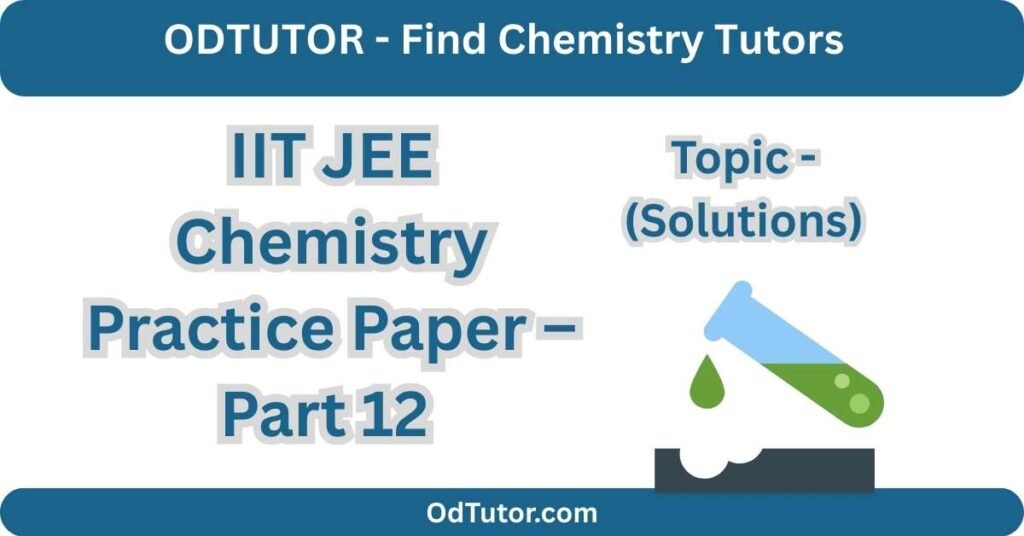IIT JEE Chemistry Practice Paper – Part 12 covers the topic of Solutions, an important unit of Physical Chemistry. This section focuses on concentration terms, Raoult’s Law, vapor pressure, colligative properties (relative lowering of vapor pressure, elevation of boiling point, depression of freezing point, osmotic pressure), and Henry’s Law. These concepts are frequently tested in JEE Main and Advanced exams. By solving these questions, students can strengthen numerical ability, avoid common mistakes, and gain confidence in handling real exam problems.
Solutions – IIT JEE Chemistry Notes
The chapter Solutions is an important topic in Physical Chemistry for IIT JEE as it combines concepts of thermodynamics, equilibrium, and practical chemistry. A solution is a homogeneous mixture of two or more components, with the component present in larger quantity called the solvent, and the smaller one(s) called solute(s).
Types of Solutions
- Solid in Liquid – e.g., salt in water.
- Gas in Liquid – e.g., CO₂ in soda water.
- Liquid in Liquid – e.g., ethanol in water.
Depending on concentration, solutions can be dilute, concentrated, saturated, or supersaturated.
Concentration Terms
Students must master different ways of expressing concentration:
- Mole fraction (χ) – ratio of moles of one component to total moles.
- Molarity (M) – moles of solute per liter of solution.
- Molality (m) – moles of solute per kilogram of solvent.
- Mass % and Volume % – often used in practical chemistry.
Solubility
Solubility depends on temperature, pressure, and nature of solute/solvent.
- For gases, Henry’s Law states that solubility is directly proportional to partial pressure of the gas above the liquid. This explains why soda bottles are sealed under pressure.
Vapour Pressure & Raoult’s Law
- For ideal liquid solutions, Raoult’s Law: PA=χAPA0P_A = χ_A P^0_A,
where χAχ_A = mole fraction of A, PA0P^0_A = vapour pressure of pure A. - Total vapour pressure is additive for components.
- Ideal solutions obey Raoult’s Law at all concentrations.
- Non-ideal solutions show positive or negative deviations due to differences in intermolecular forces.
Colligative Properties
These properties depend only on the number of solute particles:
- Relative lowering of vapour pressure
- Elevation of boiling point (ΔTb = Kb·m)
- Depression of freezing point (ΔTf = Kf·m)
- Osmotic pressure (π = nRT/V)
Colligative properties are also used to calculate molar mass of solutes, a favorite JEE question type.
Key JEE Tips
- Pay special attention to van’t Hoff factor (i) in case of electrolytes and dissociation/association.
- Expect numerical problems from colligative properties.
- Conceptual questions are often asked from Raoult’s Law and deviations.
- Previous year JEE questions emphasize solving using correct units and conversions.
✅ With solid conceptual clarity and practice of numericals, the Solutions chapter can help students secure crucial marks in IIT JEE.

